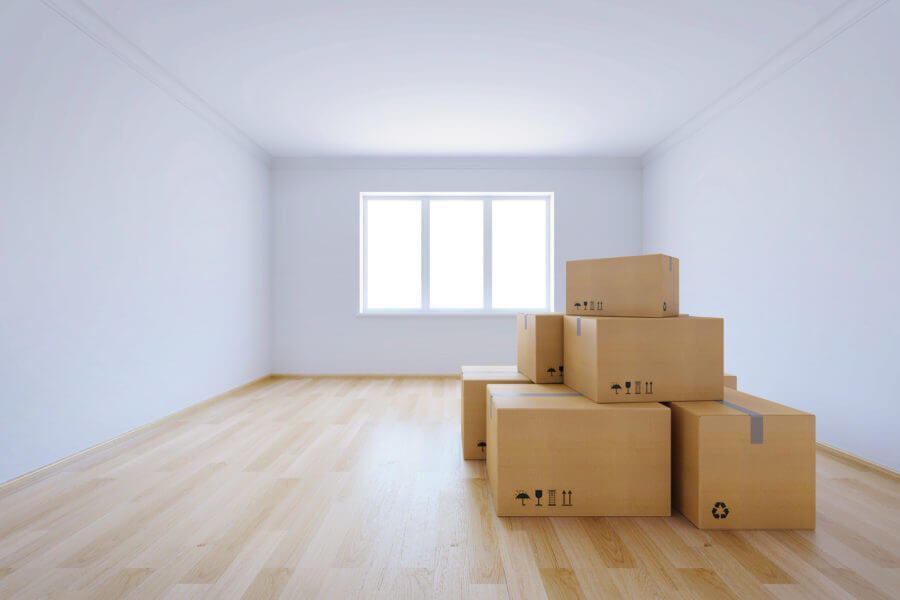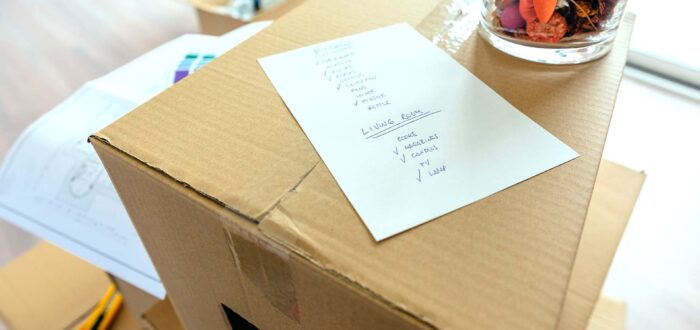

Packing Strategies for Moving Across the Country
Posted in Moving Tips & Tricks,Planning the Move on December 21, 2022
Relocating is a big undertaking, and one of the most important steps in this process is protecting all your belongings. In order to do that, you’ll need some of the best packing strategies for moving. So, let’s check them out and become a real pro in wrapping up your belongings before the move.
Wondering how to move out for the first time in the best possible way? First things first – check how to pack for a move efficiently, and you’ll almost have the answer to your question. In fact, many people consider wrapping belongings as one of the most stressful and time-consuming parts of the move. This being said, it’s good to know some packing tips for moving before you even start organizing the relocation.
Gather Supplies Before Considering Different Packing Strategies for Moving
When you decide it’s time to move, besides finding and booking reliable cross-country moving services, you need to learn the best way to pack for moving, as well. Of course, you should do all this if you want to have a stress-free move. One of the first things to do when organizing the wrapping process is to gather as many different materials and supplies as possible.
Boxes, Boxes, and More Boxes
The first thing you’ll need, of course, is boxes, and a lot of them. You can usually find boxes for free at local stores or Craigslist, but if you want something sturdier (particularly for delicate items), you can always buy special boxes from a home improvement store. Just be sure to get a mix of sizes to accommodate all your belongings.
Packing Peanuts and Bubble Wrap
Packing peanuts and bubble wrap are great for protecting your belongings during the move. If you have some fragile items, make sure to wrap them up nicely and snugly, so they don’t get damaged in transit. You can also get packing paper as well and fill the gaps in the box and ensure stuff inside isn’t moving anywhere.
Zip-Lock Bags
Putting bathroom supplies, cosmetics or spices and other things from the kitchen in the container without additional protection will result in a mess. Zip-lock bags are, therefore, a necessary component of the move as well. However, not all liquids can be moved, so be careful to ask the movers what they won’t transfer.
Declutter Your Household Right After You Decide to Move
Some relocation tips focus on smaller details, including how to care for furry friends during a relocation or what to accomplish when the movers are running late. The most crucial relocation advice, however, might have to do with how to downsize for a move. That’s when good packing ideas for moving cross country will come in handy and help you decide what to get rid of.
The first step in any packing strategy is to declutter your home. After all, there’s no point in paying to move items that you don’t even use or need. So, go through every room in your house and get rid of anything you haven’t used in the past year or so.
However, decluttering is easier said than done, especially if you’ve never done it before. So, it’s best to focus on the essentials first. These are the items that you’ll need to live comfortably in your new home until you’re completely unpacked.
Once that’s done, do the rest of the house, but start with the area that isn’t used too often. For instance, a guest room might be a wise decision. Place the items you moved from this room to the staging area in one of three groups (keep, sell/donate, throw away) as you walk through each one at a time. Do not create a fourth pile for products that you are currently undecided about.

Use the Color-Coding Method for Better Organization
This technique can help you move your items to the appropriate room with the least amount of hassle if you’re downsizing or relocating to a house with a fundamentally different floor plan. You can begin by creating a staging location in a large room with lots of floor space.
However, for many people, this could be too much information already. In that case, it’s good to have all of your to-do lists in one place – the relocation binder. This surely is one of the tips for packing for a move that will keep the whole process organized.
Make a checkbox for each room in your new house after making a list for all of them. After that, choose a hue for each room. Color-coded relocation labels with common rooms are available for purchase. If you have those, just mark each box with the necessary information.
Bring things to your staging point as you work around your house. Decide where you wish that item to go in your new house, then pack it in the box for that space. For goods you no longer want, have a trash bag and a donation box nearby. Seal the completed box after finishing it, then put together a replacement box.
To make it simple for your movers to identify which boxes go in each room at the new house, attach a label to each room’s door on moving day (be sure it can be removed without damaging the paint).
Craft Labels With Some Common Supplies
Depending on your viewpoint and how you plan it, creating labels for boxes might be enjoyable. With the help of our practical advice, you may discover some fresh and creative concepts that will make the entire process not only simpler but also more enjoyable and exciting.
Creating unique tags on your own might be creative when making labels. Purchase all essential supplies, such as paper, scissors, glue, tape, and markers. Next, decide where to place them, what colors to use, and how to categorize the containers. Although it could take a little longer initially, this approach will make the entire move a lot less difficult and unpleasant.

Go Room-By-Room and Organize One Place at a Time
This well-liked approach emphasizes decluttering your current home one room at a time. This should be your main focus as you pack and organize everything there. Like previously, you should select a staging place and gather your supplies before starting. Start by purging or donating whatever you no longer need in the area you use the least – that could be a kitchen area or a guest room. Pack the remaining stuff next.
Don’t forget to take down the wall decor, empty all the drawers, and remove the bedding. Disassemble the furniture if it needs to be done. Larger things should stay where they are for your movers while you transport smaller pieces to the staging area. When finished, shut the door and proceed to the following room.
This technique complements other techniques effectively as well. If the rooms in your new home are similar, you might seamlessly integrate the color-coded system. Alternatively, you might use the decluttering method and add the items from each room to your piles.

Call Friends and Family to Help With the Process
Many people have asked their family and friends to help them relocate, but there are good and ineffective ways to do this. Having your loved ones help might be unpleasant for you and annoying for them if you don’t have a strategy. Stop that from happening.
Instead, as soon as you find that you will be relocating, take a seat with a notepad and a pen and make a list of every single thing that has to be done in preparation for your relocation. Then, categorize those tasks into those that can be finished in advance and those that must be finished on the relocation day. You should finish all you can now in order to avoid delays. Nothing is more annoying than committing to assisting friends only to learn on the big day that they are just getting started.
Organize a Moving Away Party
What do you call a farewell celebration? People are increasingly celebrating changes in their lives, particularly those that are favorable. Most people view their decision to move as a significant opportunity for something different and interesting.
For instance, they can be moving because they fell in love and want to establish a family, or they might be relocating for employment in a distant city. No matter what, many people who are long-distance moving opt to plan a farewell gathering, sometimes known as a “going away party,” as their friends or relatives typically support them in their decision.
Check Out How the Professionals Would Do It
While it may not be the most affordable option, hiring professional cross-country movers to pack and relocate your belongings can be the least time-consuming and effort-intensive option. All you need to do is get some recommendations for relocation companies and pick the most suitable team. They will typically have your house packed in one day, significantly reducing the time it takes to prepare for a move.
A Reputable Relocation Crew Offers Different Services
Different relocation services offer different levels of support. Some movers will pack your belongings for you, while others will simply transport them to your new home. Full-service movers will do everything, from providing packing services to unpacking and even providing storage options if needed.
When choosing a moving company, it’s important to consider what level of service you need and what you’re willing to pay for it. Get quotes from several different companies so that you can compare services and prices.
Be sure to ask about any hidden fees or surcharges before you sign a contract. These can include fuel surcharges, packing materials, insurance, and storage fees. Make sure you understand all the charges before you agree on anything.

Check Some Tips on How to Ease the Wrapping Process
The key to making the packing process easier is to be organized and to plan ahead. However, when it comes to the actual wrapping and filling the boxes, check some strategies you could use:
- Tape the boxes firmly – Close the bottom and top seams with a few pieces of tape before applying one of the moving professionals’ tricks and making a few wraps all the way around the box’s top and bottom edges, which are particularly vulnerable.
- Do not combine goods from various rooms – It will expedite packing and make unpacking much simpler as well.
- Pack the heaviest boxes first for balance – Place heavier stuff on the bottoms of the box and lighter on top.
Make the Wrapping Process as Smooth as Possible With the Amazing Tips and Tricks
Packing for a cross-country move can seem daunting, but it doesn’t have to be! By decluttering your home and focusing on packing essentials first, you can make the process much easier on yourself. Remember that using sturdy boxes and basic padding material will help you save both time and money. So don’t wait until the last minute to start packing – plan ahead and make your move as smooth as possible.





